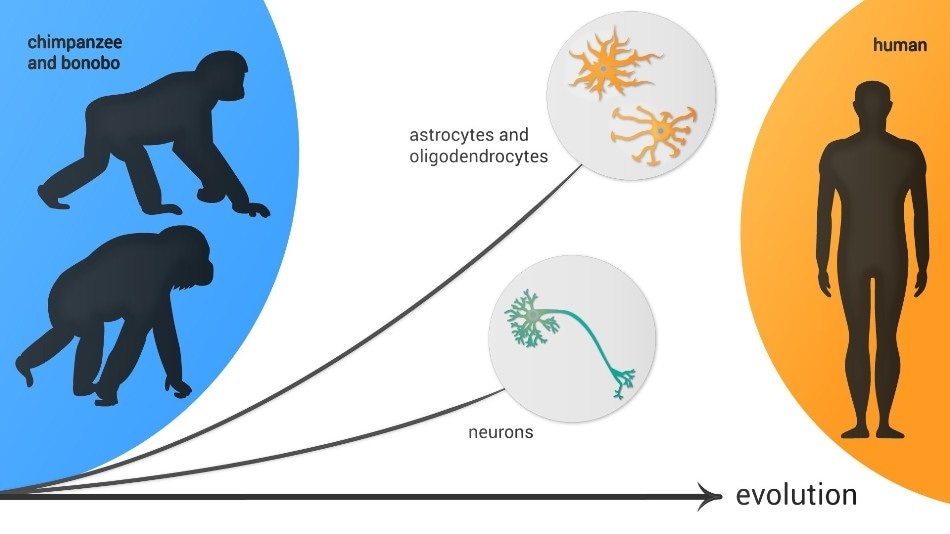Using the single-cell-resolution transcriptomics technologies, researchers have performed a large-scale analysis of gene expression in 33 different brain regions of chimpanzees, bonobos, macaques, and humans, and successfully generated a map of the various brain regions with their particular cell structures.

Oligodendrocytes and astrocytes displayed more differences in the human evolutionary lineage than neurons as compared to similar cells in other primates. Image Credit: Pavel Odinev/Skolkovo Institute of Science and Technology.
The researchers were headed by Philipp Khaitovich, a professor at the Skolkovo Institute of Science and Technology (Skoltech).
These maps are highly useful for investigating human evolution. The study results were published in the Genome Research journal.
The human brain is a remarkably complex organ, and its origin has been a subject of consistent interest for researchers, for a long time. However, researchers are not aware of the most important evolutionary changes that differentiate the contemporary brain from that of humans’ distant ancestors, and how it makes humans extremely different from other species.
Now, an international research team from Switzerland, Germany, China, and Russia, headed by Philipp Khaitovich—a professor at the Skoltech Center for Neurobiology and Brain Restoration (CNBR)—along with Ekaterina Khrameeva, the study’s first author and an assistant professor at the Skoltech Center for Life Sciences (CLS)—examined as many as 422 brain samples extracted from 33 different regions of the brain in bonobos, macaques, chimpanzees, and humans.
The researchers analyzed gene expression and focused on how certain genes function in those brain regions. Then, using the single-cell-resolution approach, the team examined a total of 88,047 individual cells. This approach allowed the researchers to detect the brain regions that are most evident in humans and thus experience faster evolution.
These brain regions include the hypothalamus, cerebral cortex, and cerebellar gray and white matter. Astrocytes and oligodendrocytes also exhibited more variations in the human evolutionary lineage than neurons, as compared to analogous cells found in other primates.
We are not the first to look into gene expression in the brain. This is an important area of research that someday will shed more light on how human consciousness appeared. However, the tricky point here is that there can be two possible reasons for evolutionary changes in expression: a change in the cellular structure in some area of the brain or a change in the expression of genes in the cells.”
Ekaterina Khrameeva, Study First Author and Assistant Professor, Skoltech Center for Life Sciences
“Previously, scientists could not draw the line between these two possibilities, and now, with the advanced single-cell-resolution method, we finally did it! Our new findings will help better understand the ins and outs of the evolution of gene expression on a more subtle level that was unavailable till now,” Khrameeva concluded.
Source:
Journal reference:
Khrameeva, E., et al. (2020) Single-cell-resolution transcriptome map of human, chimpanzee, bonobo, and macaque brains. Genome Research. doi.org/10.1101/gr.256958.119.